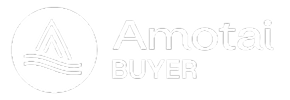



Heritage Tray®
For Designer, Metallic and Gloss colours, download the ColorCote® special colours brochure.

465 sheet
Light Commercial
Christchurch
Invercargill
Heritage Tray® Performance
Evolving from the already popular and stylish Eurotray® family, Heritage Tray® markets itself as an elegant, economical and flexible roofing profile. Additionally, it can be roll-formed on-site, an attractive logistics option for larger construction projects.

All dimensions given are nominal
Sheet Tolerances
Sheet width: ±5mm
Sheet width for aluminium +0, -15mm. If sheet cover widths are critical, advise Dimond Roofing at time of order.
Sheet length: +10, - 0mm. For horizontal wall cladding where notified at time of order of intended use, tighter tolerances can be achieved +3, -0.
*Vented underlay (Tyvek Metal or Dimond approved equivalent) laid full cover over purlins (or laid full cover over the face of cavity battens for walling) is required in all Wind Zones. In addition, Plywood substrate is required in Extra High and Specific Engineering Design (SED) Wind Zones.
**Refer to the NZMRM Code of Practice:12.1.3A Roof Noise caused by timber shrinkage, to reduce the risk of noise and other potential problems such as shrinking, warping, or deformation after roofing installation, ensure that the timber substrate has a moisture content within the range of 12% to 15%. Use a moisture meter to measure the actual moisture content and allow the timber to acclimate to the local climate
***Contact Dimond Roofing on 0800 ROOFSPEC for specific advice on product suitability for your location.
(1) Product only available in ColorCote® MagnaFlow™ or Colorsteel® MAXXAM coated product range
Roll-forming facilities at: Auckland, Christchurch and Invercargill
Curving facilities: n/a
Sheet lengths: Heritage Tray is custom run to order.
Where long sheets are used, consideration must be given to:
- Special transportation licences
- Should be run on-site
- Site access for special lifting equipment
- Fixing techniques to accommodate thermal expansion
This roofing system is to be installed by a RoofingSmiths or a Dimond Recommended Installer.
***NOTE:
- The Dimond Roofing Heritage Tray profile is only available in a fixed cover width, and cannot be manually folded. When the profile is used as wall cladding, careful attention is required to sheet set-out and sheet width tolerances to ensure the sheet modules align to wall openings.
SOUND REVERBERATION
Extreme wind events may cause sound reverberation on Heritage Tray pans. It does not cause detriment to product performance.
OIL CANNING
Oil Canning is the visible waviness in the flat areas of metal roofing and walling. Oil canning produces an aesthetic effect inherent in standing seam tray profiles and profiles/flashings with wide flat elements. It does not cause detriment to product performance.
Oil canning can occur during the forming and installation processes and during thermal expansion of the roof sheeting during its life cycle. The effect can be more or less pronounced depending on differing light and sun angle conditions and the coating gloss levels.
For Heritage Tray, oil canning can be reduced by the vented roof underlay (e.g. Tyvek Metal). There are several options to reduce the oil canning effect in tray-type profiles and flashings, for example:
a) increasing the thickness of the material,
b) using stiffening swages in wide flat elements and
c) limiting flat elements to less than 150mm width.
For further information, please refer to the New Zealand Metal Roof and Wall Cladding Code of Practice, Section 12.3.
Relevant Product CAD Details
Below you will find all of the relevant product CAD technical details in .dwg, .pdf & .rvt format.
If you have any questions regarding the details below please contact one of our technical team on 0800 ROOFSPEC.
Heritage Tray - Horizontal Cladding With Cavity Window Detail - Head Flush Mount...
Last updated May 2021
Heritage Tray - Horizontal Cladding With Cavity Window Detail - Jamb Flush Mount...
Last updated May 2021
Heritage Tray - Horizontal Cladding With Cavity Window Detail - Sill Flush Mount...
Last updated May 2021
Product Technical Statement
To help you get through the building consent process as quickly as possible, we have developed the Product Technical Statement (PTS) downloads to make it quick and easy for both Architects and Home Owners to access the documentation required.
The PTS downloads hold all of the information that the council requires for a building consent where Dimond product is specified.

















































